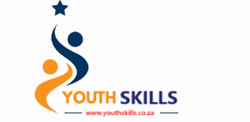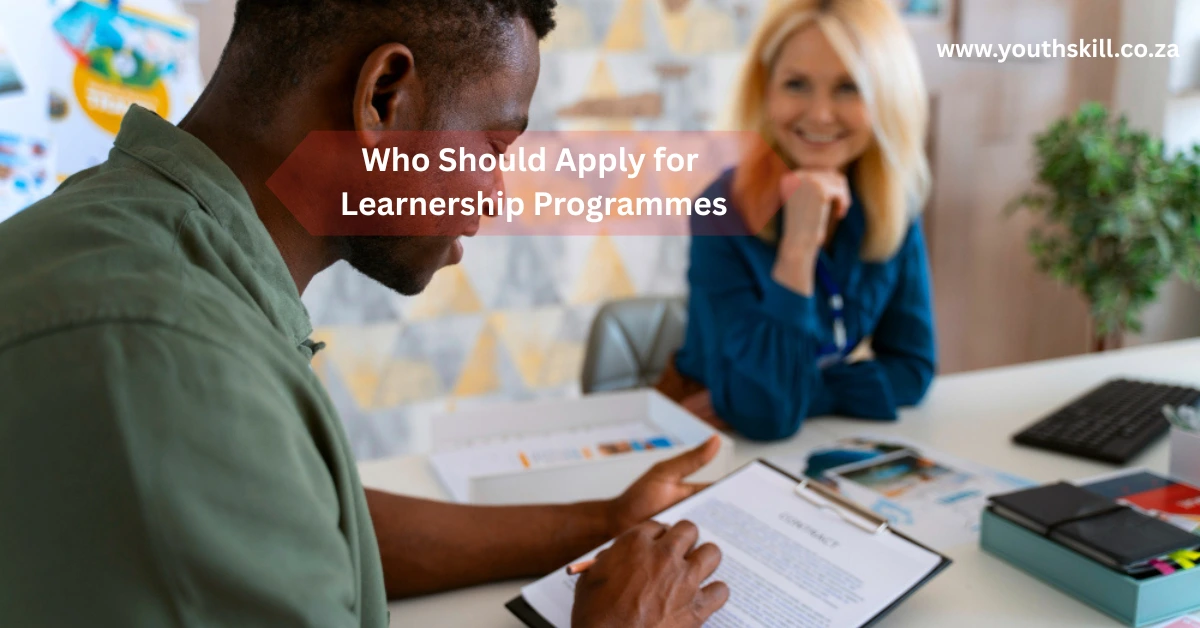In South Africa, learnerships have become a powerful stepping stone for individuals looking to gain skills, experience, and qualifications that open doors to employment. They blend theory and practical work into one structured programme, making them ideal for people at different life stages — from school leavers to career changers.
But who exactly should apply for a learnership? And what should you know before sending in your application? This guide will take you through everything — from the ideal candidates to the key requirements, so you can confidently take your next step.
Understanding Learnerships: More Than Just Training
A learnership is a work-based learning programme that leads to a nationally recognised qualification. Unlike traditional education, learnerships combine:
- Theoretical learning – often delivered through a training provider.
- Practical, on-the-job training – hosted by an employer.
This dual approach ensures that learners don’t just study concepts — they apply them in real workplace scenarios. For example, a learnership in business administration may involve learning office systems in class while also assisting with real company projects.
Why Learnerships Exist
Learnerships are part of South Africa’s strategy to:
- Address youth unemployment by creating work-ready graduates.
- Support transformation through targeted inclusion of previously disadvantaged groups.
- Close skills gaps in industries where demand is high.
- Create career pathways for people without prior experience.
By participating in a learnership, you are not only improving your own prospects — you are also contributing to the country’s economic and social development.
The Main Groups Who Should Apply
While learnerships are open to a wide audience, they are particularly suited for certain categories of people.
1. Recent School, College, or Training Graduates
If you’ve recently completed Grade 12, college, or a vocational course but haven’t yet found work, a learnership can be the bridge between education and employment.
It’s a chance to:
- Gain practical workplace experience.
- Build a professional network.
- Earn a qualification while being exposed to real work challenges.
For example, a student who completed a National Certificate in IT might take up an IT support learnership to gain hands-on experience before applying for permanent roles.
2. Unemployed Youth
For many unemployed individuals — especially those aged 18 to 35 — learnerships offer a structured, paid opportunity to learn and work at the same time.
Key benefits include:
- Receiving a stipend to help cover basic expenses.
- Getting practical experience that improves employability.
- Obtaining an NQF-aligned qualification recognised nationally.
3. People Seeking Career Changes
It’s never too late to change direction. Learnerships can be the first step into a new career, even if your past experience is in a completely different field.
For example:
- A retail cashier might enter a supply chain management learnership to move into logistics.
- A call centre agent might join a human resources learnership to shift into recruitment or employee relations.
4. Employees Wanting to Upskill
Some learnerships are available through your current employer as part of workplace skills development programmes.
These are perfect for:
- Gaining deeper knowledge in your field.
- Preparing for a promotion or role change.
- Earning a recognised qualification without leaving your job.
Inclusivity in Learnership Programmes
One of the most important aspects of learnerships is their focus on diversity and inclusion. Employers and training providers actively encourage applications from:
- Black South Africans – to promote transformation in the workplace.
- Women – especially in male-dominated fields like engineering or IT.
- People with disabilities – many learnerships offer reasonable accommodations to make training accessible.
This inclusivity ensures that opportunities are open to a broad range of candidates, regardless of background.
Minimum Requirements for Most Learnerships
While specific requirements vary by programme, the following are common:
| Requirement | Typical Criteria |
|---|---|
| Age | Usually between 16 and 35 years old |
| Education | Minimum Grade 10 or equivalent (some require Grade 12 or NQF Level 4) |
| Citizenship | South African citizen with a valid ID |
| Language skills | Ability to communicate in English or another relevant language |
| Availability | Willingness to commit to the full learnership duration (6–24 months) |
Some specialist learnerships — for example, in healthcare or engineering — may require prior experience or specific subjects in school.
Special Considerations When Applying
1. Employer Support
Because learnerships involve practical workplace training, having an employer willing to host you is essential. In most cases, the learnership provider arranges this, but in some cases, you might need to secure your own host employer.
2. Disability Inclusion
If you are a person with a disability, many learnerships will:
- Offer accessible learning environments.
- Provide necessary accommodations (e.g., assistive technology, adapted materials).
- Have mentorship and support tailored to your needs.
3. Stipends and Costs
Learnerships are generally free to participants and include a monthly stipend. This is not a salary but a financial allowance to cover transport and basic needs during the programme.
4. Time Commitment
Most learnerships are full-time, running between 6 months and 2 years. Be prepared to commit fully, as dropping out can affect your chances of being accepted into future programmes.
Who Should Think Twice Before Applying?
While learnerships are valuable, they may not suit everyone. You might need to reconsider if:
- You cannot commit to the full programme period.
- You are looking for a high salary immediately rather than a stipend.
- You are unwilling to learn new skills or adapt to workplace rules.
Remember — a learnership is an investment in your future, not a shortcut to instant wealth.
How to Increase Your Chances of Being Selected
With many people competing for limited spots, here’s how to stand out:
- Prepare a professional CV highlighting any skills, projects, or volunteer work.
- Research the field so you can explain why you’re interested in it.
- Apply early — many programmes close applications before their advertised deadline.
- Follow instructions exactly — incomplete applications are often rejected.
- Show enthusiasm in interviews — employers value attitude as much as qualifications.
The Real Impact of Learnerships
For many South Africans, learnerships have been life-changing. They not only provide technical skills but also teach:
- Workplace communication.
- Problem-solving.
- Time management.
- Team collaboration.
Graduates of learnerships often report higher confidence, better job prospects, and a clearer understanding of their career goals.
From Classroom to Career: A Learner’s Story
Take the example of Thabo, a 22-year-old from Limpopo. After completing matric, he struggled to find work. Through a SETA-funded business administration learnership, he spent 12 months learning both theory and workplace skills.
Today, he’s employed full-time as an office administrator and is studying part-time for a diploma. His journey shows how a learnership can transform determination into opportunity.
Where to Find Learnership Opportunities
You can find available learnerships through:
- Sector Education and Training Authorities (SETAs) – each industry has its own SETA that funds programmes.
- Government websites – such as the Department of Labour or provincial education departments.
- Company career portals – many large organisations advertise directly.
- Job boards and recruitment sites – filter by “learnership” to find current openings.
Why Learnerships Are Worth Considering in 2026 and Beyond
The workplace is evolving quickly, with technology and industry needs changing every year. Learnerships allow you to:
- Gain up-to-date skills aligned with market demand.
- Enter industries where formal education alone may not be enough.
- Earn a recognised qualification without incurring high tuition debt.
In short, they offer a practical, inclusive, and future-focused pathway into meaningful employment.
Quick Facts: Learnerships at a Glance
| Aspect | Details |
|---|---|
| Target Group | Youth (16–35), unemployed individuals, career changers, employees upskilling |
| Qualification Level | NQF-aligned certificate or diploma |
| Duration | 6–24 months |
| Cost | Free to learners |
| Payment | Monthly stipend |
| Inclusivity | Actively encourages women, people with disabilities, and previously disadvantaged groups |
| Outcome | Work experience + qualification + improved employability |
Final Thoughts
If you’re at a point where you want to gain skills, build experience, and earn a qualification, a learnership could be your launchpad. Whether you’re just out of school, unemployed, changing careers, or seeking professional growth, these programmes are designed to equip you for success.
By understanding who should apply, the requirements, and the commitment involved, you can make an informed decision — and take the first step toward a brighter career future.

